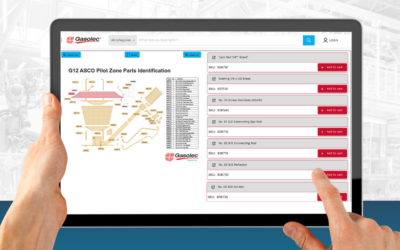Forrester forecasts that U.S. B2B eCommerce will reach $1.8 trillion and account for 17% of all B2B sales in the U.S. by 2023. While this forecast was made in 2019, we think the COVID-19 crisis will only act as an accelerant.
With this anticipated growth, here are three considerations for your B2B eCommerce Business:
1. Meet customers where they are
Historically, fears of “sharing to much” about your companies products, services, or strategy often meant withholding or gating important information. But this doesn’t apply to today’s digitally savvy customer.
Companies should position not only position their products and services adroitly in front of digitally-browsing customers, but they should demonstrate their industry expertise, product understanding, and deep knowledge in these areas to give customers qualitative information to make decisions. This helps cement the relationship with the potential customer or provides practical tools and information for dealer networks who help sell your products.
2. Strive for collaboration, automation and integration
Successful ecommerce experiences that drive “stickiness” of your site requires seamless collaboration with customers, suppliers and partners. That means accessing, pulling, and packaging disparate data and product information for different business users, while protecting proprietary information.
Today, integration with backend ERP, CRM, inventory and fulfillment systems is often optimized with manageable APIs. This is vital for ensuring real-time proper inventory maintenance, order fulfillment, and customer support. Successful companies ensure that relevant information is available to all appropriate users and customers for a seamless experience. What the customer sees on the front end of your site must be the same information your sales and customer service representatives are providing.
When all systems are able to handle processes seamlessly in real-time, the prospect of order errors lessens and operational costs are decreased.
3. Adopt a mobile-first mindset
A key differentiator of a company’s success digitally is a mobile-first mindset. Customers, partners, and suppliers, are by definition, de-centralized. And they operate in a decentralized way — mobile computing leveraging ever-increasing capacities of tablets and smart phones, enables the same convenience afforded to consumers, to your business customers.
Field techs, fulfillment teams, warehouse and shop floor personnel, for example, can leverage the same integrations and ecommerce interfaces “in the wild” as they do on their desktops in their offices. Great user experiences for your customers and suppliers helps to cement long term relationships.
Feature Posts
Introducing InteractiveSchematics: Streamline Your Parts Management
Are you still managing parts sales with outdated PDFs, obsolete parts lists, or elusive paper product manuals? It’s time for a transformation. Envalo is proud to introduce InteractiveSchematics, a cutting-edge solution designed to simplify parts management and elevate...
Adding a Direct-to-Consumer Model Does Not Mean Leaving Your Dealers Behind
As a manufacturer, you’re faced with responding to the evolution of your end customer. Technology continues to change the playing field. Before the Internet, manufacturers relied on sales reps, dealers, and distributors to build awareness and get their products into the hands of their customers.
Post-Purchase Engagement for Industrial Manufacturers: Build Loyalty and Increase Sales
Industrial systems are often large capital investments that last years. Upselling or reselling to the same customer year after year isn’t an option. With near-term sales goals on the horizon, your focus is likely on generating new leads and sales.




